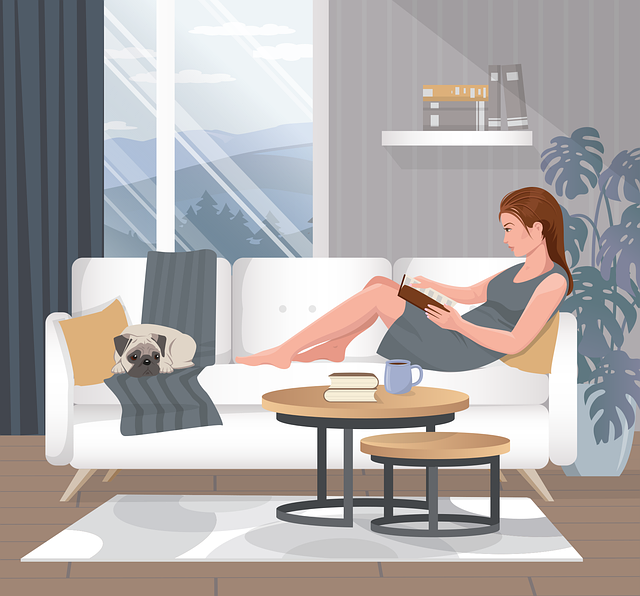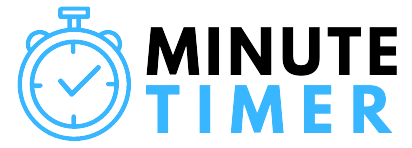
Amidst the constant barrage of notifications, multitasking, and tight deadlines, our minds are often pulled in countless directions. Such relentless demands can lead to burnout and decreased productivity.
Thus, relaxation techniques, like meditation and timed breathing exercises, serve as essential counterbalances. They not only rejuvenate the mind but also enhance our capacity to concentrate, making them indispensable tools for modern living.
Understanding the Basics
The Essence of Mental Focus
Mental focus can best be described as the brain’s capacity to channel its cognitive resources towards a particular task or subject. It’s the mind’s spotlight, selectively illuminating relevant topics while leaving others in obscurity. In the overwhelming tide of the digital era, with incessant stimuli, a robust focus acts as our brain’s shield, filtering out the noise and emphasizing only the meaningful.
The Modern Imperative for Sharp Focus
Our current age, bursting with information, continuously tugs at our attention. Without a cultivated focus, the risk of cognitive overload becomes a daunting reality. It’s the filter of focus that sifts through this sea of data, ensuring precision and enhancing productivity. Moreover, whether in professional endeavors, academics, or personal pursuits, a concentrated focus can elevate an individual from mere surface-level understanding to profound depth and mastery.
Relaxation: The Unsung Hero of Concentration
At first glance, relaxation might seem like the polar opposite of focus, but it’s a vital component in the mental equilibrium. Think of the mind as a muscle; without proper rest intervals, fatigue sets in, diminishing its performance. The same logic applies to our cognitive functions. Relaxation techniques, from meditation to simple deep-breathing exercises, act as these rest intervals, recharging the brain for subsequent bouts of intense focus.
The Symbiotic Relationship: Relaxation and Concentration
When relaxation steps into the picture, it’s not just about a pause in activity. It’s an active rejuvenation process. This downtime often paves the way for unexpected insights, with the relaxed mind connecting information dots in novel ways. It’s akin to cleaning and preparing a canvas, readying it for the artist’s next masterpiece.
In the intricate dance of mental well-being, focus and relaxation are partners, each amplifying the other’s strengths. They ensure that our mental energies are not just directed, but also sustainable and renewed, optimizing our cognitive prowess in this complex world.
Short Meditation Sessions with a Minute Timer
Diving into Meditation: Guided vs. Unguided
Meditation, a practice deeply rooted in various ancient cultures, is often seen as a tool for deep introspection and connection with the self. Broadly, meditation can be classified into two types: guided and unguided.
Guided Meditation involves following the instructions of a teacher or an audio recording. Here, the guide steers the course of the meditation, from breathing patterns to visualizations. Ideal for beginners, it offers a structured path, helping the mind navigate the unfamiliar territory of profound relaxation and focus.
On the other hand, Unguided Meditation, also known as silent meditation, involves meditating without the direct assistance of an external guide. The practitioner relies on their knowledge, allowing the meditation to flow naturally. This form is often preferred by those who have some experience and wish to delve deeper, tailoring their sessions to personal needs and insights.
Crafting Your Meditation Moments: Structuring Short Breaks
Integrating meditation into a busy day might seem challenging, but with the right approach, it’s perfectly feasible. Short meditation breaks, spanning just a few minutes, can be interspersed throughout the day, acting as refreshing mental pit-stops.
Begin by identifying potential ‘pause points’ in your day. It could be a few minutes post-lunch, during a mid-morning break, or even while waiting for your coffee to brew. The key is consistency; the more routinely these breaks are scheduled, the more beneficial they become.
Equip yourself with a comfortable spot – it doesn’t need to be a dedicated meditation corner, even a quiet space at your desk suffices. Sit comfortably, close your eyes, and direct your attention inward. These moments act as mini-recharges, ensuring you return to tasks with renewed vigor.
The Timer: A Meditation Ally
Using a timer during meditation might seem counterintuitive; after all, isn’t meditation about transcending time? However, especially for short sessions, timers play a pivotal role.
Firstly, they introduce a sense of discipline. Setting a timer ensures that you allocate dedicated moments to your practice, free from the urge to frequently check the clock. This undisturbed span promotes deeper immersion.
Secondly, timers foster consistency. Knowing that you’re committed to just a few minutes makes the practice less daunting, ensuring regularity. Over time, these short consistent sessions accumulate, offering profound benefits akin to longer sessions.
Lastly, timers facilitate progression. As one becomes more accustomed to meditation, the duration can be gradually increased, promoting deeper exploration and mastery.
In essence, while the timeless realm of meditation offers vast mental landscapes to explore, the humble minute timer acts as a gentle guide, ensuring we remain grounded, consistent, and ever-evolving in our journey.
Breathing Exercises Using a Timer
The Breath-Mind Connection: Unveiling the Science
Our breath, often overlooked, is a powerful bridge between the mind and body. Science has consistently highlighted the profound effects of breath control on the neural landscape. When we consciously alter our breathing patterns, it impacts the autonomic nervous system, which in turn influences our stress responses, heart rate, and even neurotransmitter release. For instance, slow, deep breaths stimulate the parasympathetic nervous system, promoting a state of calm and reducing stress hormones like cortisol.
Immediate Relief: Practical Breathing Techniques
Harnessing the power of breath for stress relief doesn’t require extensive training. Here are some effective techniques:
- Box Breathing: Inhale for a count of 4, hold for 4, exhale for 4, and pause again for 4. This square pattern is not only soothing but also improves focus.
- Diaphragmatic Breathing: Focus on deep breaths from the diaphragm rather than shallow ones from the chest. This deeper breathing engages the lower lungs, where more calming receptors are located.
- 4-7-8 Technique: Inhale for a count of 4, hold for 7, and exhale for 8. This technique is known for its almost sedative effect, making it excellent for relaxation before sleep.
Timers: Structuring Breathwork into Daily Life
Integrating timed breathing exercises into daily routines enhances their efficacy. Here’s how timers can assist:
- Consistency: By setting aside specific ‘breathing breaks’ and using a timer, you establish a routine, ensuring you benefit regularly from these exercises.
- Duration Management: A timer allows you to accurately follow the counts in breathing techniques, enhancing their efficacy. Over time, you can also incrementally increase session durations as you become more accustomed to the exercises.
- Integration with Activities: Consider coupling timed breathing sessions with other activities. For instance, a 5-minute deep breathing exercise during your morning coffee or a box breathing session during work breaks.
Breathing, in its simplicity, hides a treasure trove of benefits. With the aid of timers, this ancient practice finds a modern adaptation, seamlessly integrating into our fast-paced lives, offering moments of respite and rejuvenation.
Conclusion and Additional Tips
Harmonizing Focus and Relaxation: A Path to Wholeness
The journey towards holistic well-being is akin to weaving a delicate tapestry; each thread, representing different practices, intertwines to create a comprehensive picture. Focus and relaxation, seemingly contrasting, are in reality two sides of the same coin. While focus propels us towards achievement and mastery, relaxation ensures sustainability and depth. Merging these techniques harmoniously results in not just enhanced productivity but a profound sense of inner balance. It’s in the confluence of these practices that we discover our optimal state of mind, where challenges are met with clarity, and rest is imbued with purpose.
Embracing Modern Aids: Resources and Apps
In the digital age, technology can be a double-edged sword. While it often poses as a source of distraction, when harnessed correctly, it becomes a valuable ally. Here are some resources and apps to bolster your journey:
- Calm: A multifaceted app offering guided meditations, breathing exercises, and sleep stories. Its diverse content caters to both beginners and seasoned practitioners.
- Headspace: This app emphasizes mindfulness and meditation. With structured courses addressing various life challenges, it’s a comprehensive guide for mental well-being.
- Focus@Will: Merging focus and relaxation, this app offers ambient music designed according to neuroscientific principles to enhance concentration.
- Insight Timer: A vast repository of free meditations, guided sessions, and ambient sounds. The timer function allows for customized meditation durations, integrating seamlessly with your schedule.
Additional Tips for a Balanced Mind
- Regular Detox: Periodically, take a digital detox. Disconnecting helps in reconnecting with the self and reduces cognitive clutter.
- Nature’s Embrace: While structured practices are invaluable, never underestimate the power of nature. Regular walks or simply spending time outdoors can rejuvenate the mind.
- Commit to Learning: The realm of focus and relaxation is vast. Regularly seek out books, courses, or workshops to deepen your understanding and practice.
In conclusion, as we navigate the multifaceted challenges of modern life, the fusion of focus and relaxation emerges as a beacon. By continuously evolving our practices and embracing both traditional wisdom and modern tools, we pave the way for a fulfilled, balanced, and enriched existence.
